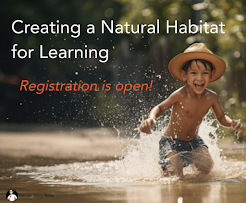Subscribe to:
Post Comments (Atom)
skip to main |
skip to sidebar

Teaching and learning from preschoolers
Teacher Tom's Course
Search Teacher Tom
Book Teacher Tom for your event
If you are interested in inviting me to speak at your conference or to otherwise work with me, please send your query to my wife and business partner:
Jennifer@TeacherTomsWorld.com.
We will make every effort to accommodate your schedule, but please keep in mind that I'm often scheduled a year or more in advance so please book early!
Stay Up To Date With Teacher Tom
To keep up to date with the latest news from Teacher Tom, sign up for our email list. We will not sell or share your information, ever. And we won't flood your inbox. To get on the list, please email Teachertomhobson@TeacherTomsWorld.com with "Email list" in the subject line. Thanks!
support teacher tom
This is my personal blog and is not a publication of the Woodland Park Cooperative Preschools. I put a lot of time and effort into it. If you'd like to support me please consider a small contribution to the cause. Thank you!
Teacher Tom's Topics
- art (486)
- blogging (65)
- circle time (166)
- community (1150)
- conflict (392)
- construction/tinkering (571)
- cooperative (211)
- cooperative nuts and bolts (5)
- death (25)
- development (369)
- dramatic play (556)
- education reform (410)
- education transformation (424)
- emotions (498)
- fairness (269)
- fine motor (211)
- gardening (41)
- Halloween (24)
- kindergarten (75)
- Language (81)
- large motor (485)
- life and death (296)
- Little World (19)
- love (281)
- media (60)
- Mister Rogers (85)
- multi-aged classroom (69)
- outdoor play (771)
- parenting (621)
- play summit (70)
- podcast (6)
- power (234)
- rules (164)
- science (651)
- sensory (267)
- songs (53)
- stories/storytelling (233)
- superheroes/princesses (114)
- tape-off (9)
- Teacher Tom's art (24)
- Teacher Tom's First Book (5)
- Teacher Tom's Second Book (3)
- teaching (1466)
- traditions/rituals (243)
- Why I Teach The Way I Do (11)
- Woodland Park (135)
About Teacher Tom
- Teacher Tom
- Seattle, Washington, United States
- I am a preschool teacher, blogger, speaker, artist and the author of Teacher Tom's First Book. After nearly 20 years as the preschool teacher at the Woodland Park Cooperative School teaching children from 2-5, I'm now working with businesses and other institutions to help make high-quality, play-based preschool education a possibility for children everywhere.
Subscribe to Teacher Tom by email
Teacher Tom's Blog List
-
-
-
-
-
-
Solstice 2023: Abandon4 months ago
-
Studio and Umbrella Project Update6 months ago
-
Miso Marinated Air Fryer Chicken Kebobs8 months ago
-
An Epilogue of Sorts1 year ago
-
P is for Pizza!2 years ago
-
-
-
-
-
Labor of Love6 years ago
-
Let the Babies Play7 years ago
-
Janet Lansbury
Blog Archive
-
▼
2012
(363)
-
▼
January
(31)
- "It's A Fire Contraption!"
- With Us All Gathered Around
- We Let Dragons Flow Through Us
- Applying Pigment To A Surface
- Mouse Trap
- Skiing
- But We Still Have Soooo Much To Do!
- Lily's Courage Had Rubbed Off On Them
- This Is The Critical Phase
- Banning Books
- Our New School!
- I Will Not Teach Violence
- A Moral Education
- Call Your Representatives
- I Don't Worry About Our World So Much
- Chaos Or Community?
- The Colors Of Us
- Waterfall Painting
- Today Is Your Lucky Day
- We've Invented A New Toy!
- Listening
- An Art Exploration
- I Thought They Were Just Playing
- #reasonswhyIhateschool
- The Story Of Education
- It's Up To Us To Do It Ourselves
- We Were Playing Yesterday
- Clutching
- If You Really Want A Smart And Happy Kid
- Bigger, Longer, Louder Memories
- Something That Matters
-
▼
January
(31)
Copyright © 2000-2023 Thomas Hobson






3 comments:
What a laugh-out-loud wonderful post. I particularly like your inner 60's mum.
I agree with Aunt Annie, I am laughing with you over the conundrum of the pointed stick. Wonderfully funny post, yet so very true!
Tom,
Thanks for this great post, it is also a reminder of the role of tools, and I love the fine line between vigilance and control. This is something educators and parents are always trying to keep in perspective.
I'm afraid I have alot of 60's Mom in my makeup, and need to constantly step back and trust in the child's ability to keep safe.
I like that the kids moved to the loft for a different way to fish.
Brenda
Post a Comment